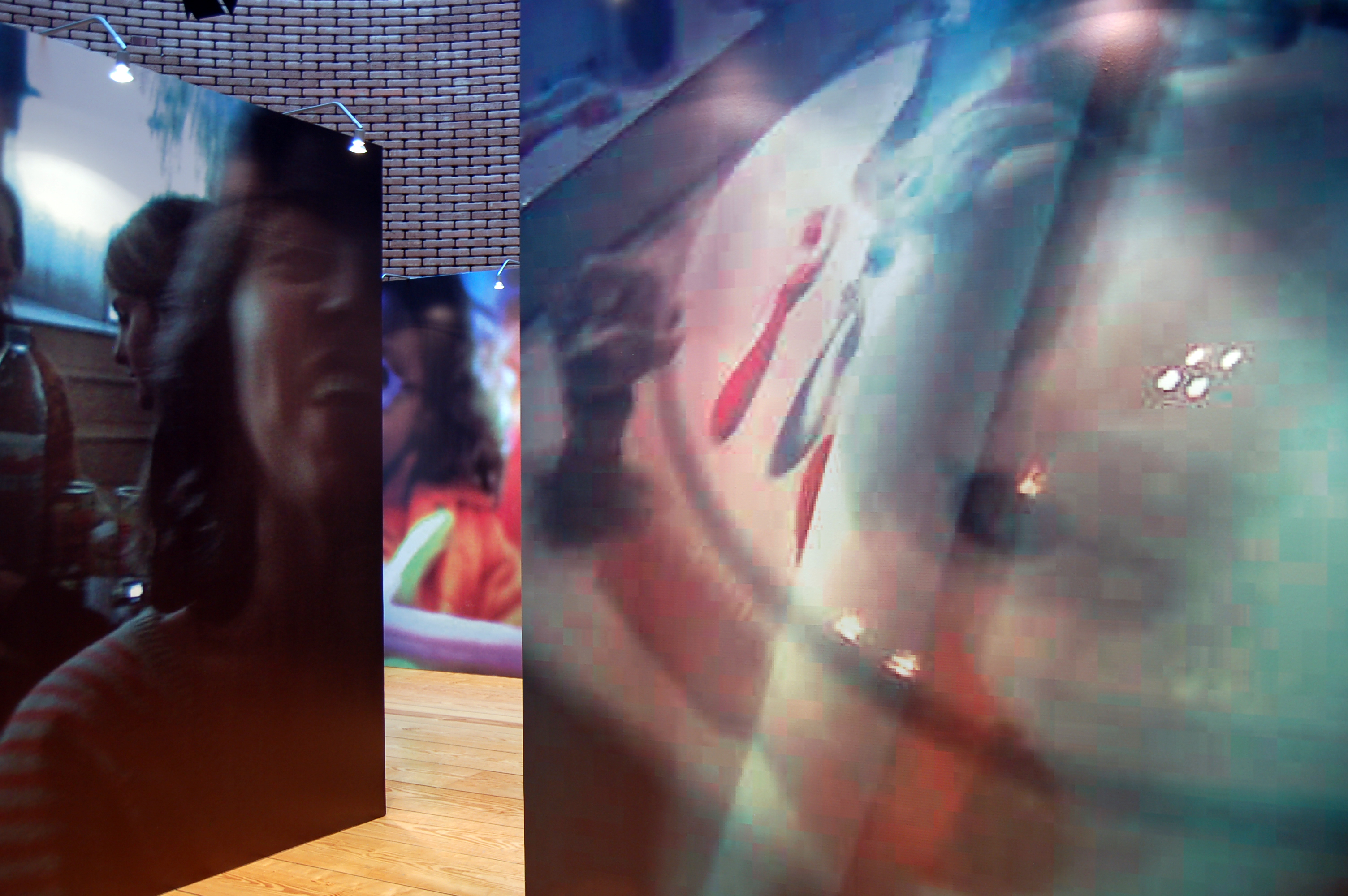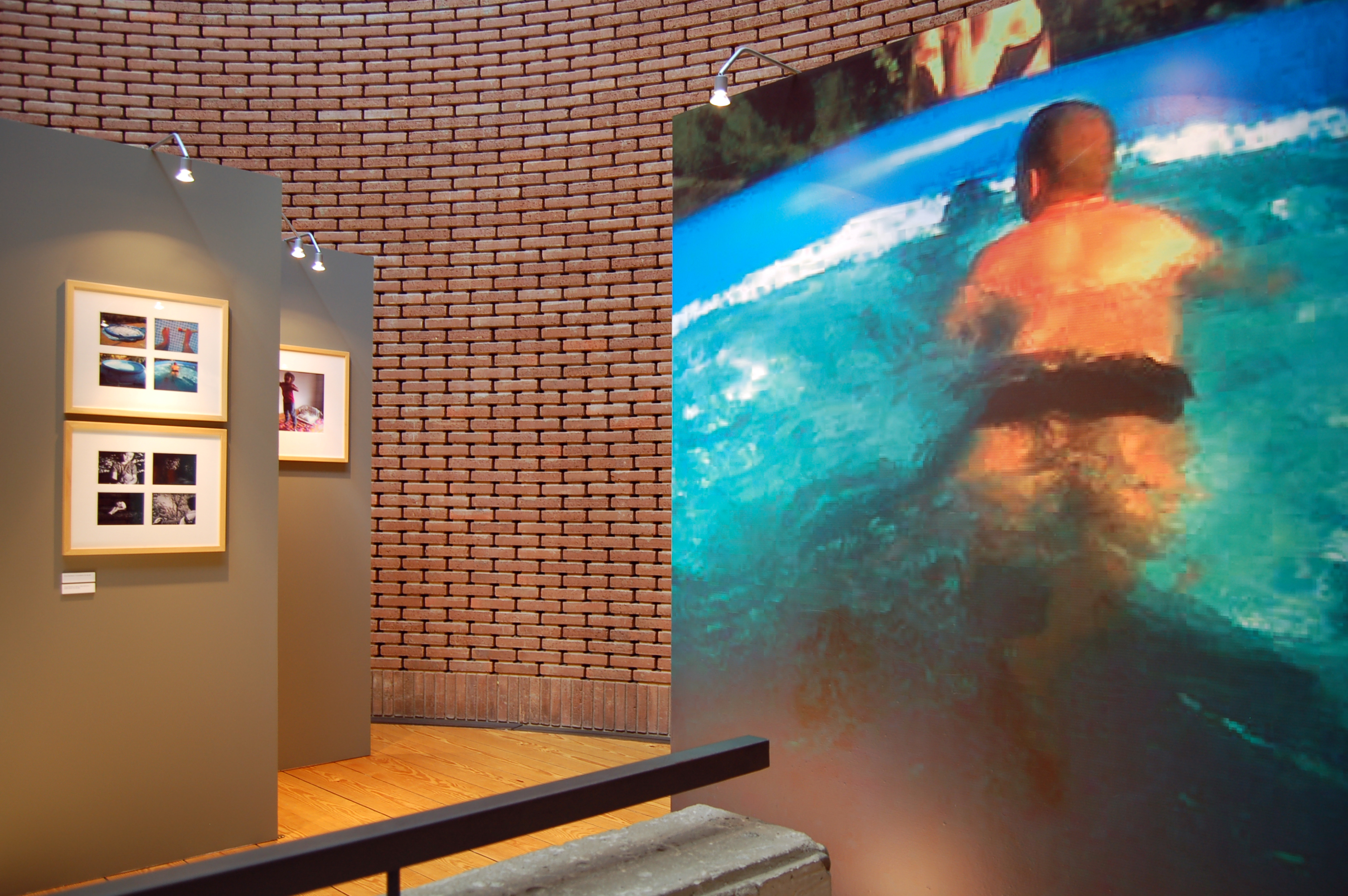

Before the arrival of personal computers and digital cameras, a photograph was something that people conventionally thought of as a printed image, whether as an original or a reproduction in a newspaper or magazine. Nowadays many photos that people take may never make the journey from hard drive or memory card to printed paper. They are conceived on LC display, viewed on screen and passed from device to device. They inhabit and travel through a world which is one pixel thick. This is particularly true of photos taken with mobile phones whose existence appears to be especially transient.
With this in mind, the exhibition Photographic Calls set out to explore this apparent lack of permanence, to explore what sort of afterlife these images have, if any – what sort of resonance they have, both aesthetically and as photographic registers. In short, to see what sort of trace of our daily lives they are capable of leaving. As a way of doing this — to contemplate them from a different perspective and with greater attention — the images were removed from their usual screen-based viewing domain and transferred to print, and are presented much in the same way as one might expect to see ‘conventional’ photographs.
From one point of view, these low resolution images hold a certain fascination in formal visual terms precisely because of their reduced definition. They could be described as the equivalent of quickly taken shorthand summaries of complex texts. Tonal and colour range is reduced and simplified, visible pixels substitute contour definition, light sensitivity is diminished and the effects of movement become exaggerated. All of these technical characteristics result in different degrees of visual abstraction. Considering the high degree of visual information that digital recording is capable of capturing – more information in fact than a viewer would ever want or ever need – these images could be described simply as ‘bad’ photographs. But this really depends on whether ‘likeness’ and ‘fidelity’ — what we have come to know as photographic reality (the appearance of the real) — is used as the benchmark in defining ‘good’ photographs.
What we most certainly have come to accept through the last hundred and fifty years of photographic tradition, as Lev Manovich* has argued, is the image of photography as reality, whereas “what the camera captures” he writes, “is not our perceptual and bodily experience of reality but only its photographic image, not reality but photographic reality as seen by the camera lens”. And this image, he goes on to say, “exists outside of our consciousness, on a screen – a window of limited size which presents a still imprint of a small part of outer reality, filtered through the lens with its limited depth of field, filtered through film’s grain and its limited tonal range”. The fact that these images distort photographic reality, and are in conventional terms ‘sub-standard’ with regard to fidelity, doesn’t prevent them from having the potential to represent reality, or make them any less faithful in representing reality than conventional photographs.
In the near future, as the quality of the cameras in mobile phones increases, the restricted visual characteristics which bring an element of novelty to these images will cease to exist. But this feature is not the only element of potential interest. Apart from perhaps a wristwatch, the mobile phone is the one item that many people have with them almost 24 hours per day. Even more than the compact digital camera, this, in theory anyway, creates the possibility of taking photographs at any time of the day, in any place and in any situation — the camera is always at hand — although it remains to be seen whether or not this results in new photographic practices.
All the photos on display in the exhibition were taken using a mobile phone but are the result of different requests. It seemed important to get an idea of how phone cameras are used within the context of normal daily routines, and furthermore, in the knowledge that there is a generation of young people who have probably never used an analogic (film) camera and have grown up instead with digital photography as their only experiential reference. Secondary school students from Gomes Teixeira Secondary School, Porto, between the ages of 12—15, were invited to send examples of photos they had taken with their phone cameras. No special criteria was specified, only that they should be already existing photos that they liked.
Interestingly, the result of this (unscientific) sampling reveals no great surprises. In the biggest category are photos from adolescent girls posing in self portraits, either alone or with girlfriends. The much smaller amount of boys that submitted portraits are happier to pull faces in front of camera. Pictures of family members feature in some number as do pets and other animals. Where there is playfulness in the photos, it is acted out by the subjects and very rarely produced by using the visual characteristics of the camera itself. There are very few attempts for example at capturing movement with blurred images. The framing of the photos is mostly traditional in composition — with few strange angles or perspectives. Overall there is a noticeable absence of abstraction. In photographic terms the images are largely conventional and as might be expected tell us more about these young peoples immediate priorities and references. Probably the most interesting aspect comes from a sociological point of view about the way in which the girls especially are involved in a process of building and projecting their self-image. The second request, from which the principle part of the exhibition draws its content, was a specific invitation made to selected designers, photographers, other professionals and design students from ESAD to take a series of photos for the exhibition. The brief was that these images captured four moments within the space of a day. These invited participants were also asked to make a 15—20 second film, again using their mobile phones, which also feature as part of the exhibition. The approaches taken in this section, vary largely. Some participants made use of the visual abstraction possibilities, others chose more conceptual approaches, in both of these cases sometimes also taking the opportunity to photograph things and situations that they may normally not chose to. The results demonstrate that whilst the technological means we have at our disposal affect and condition the manner in which we speak, it is never simply the nature of the technology that makes the image but the nature of the person using it.